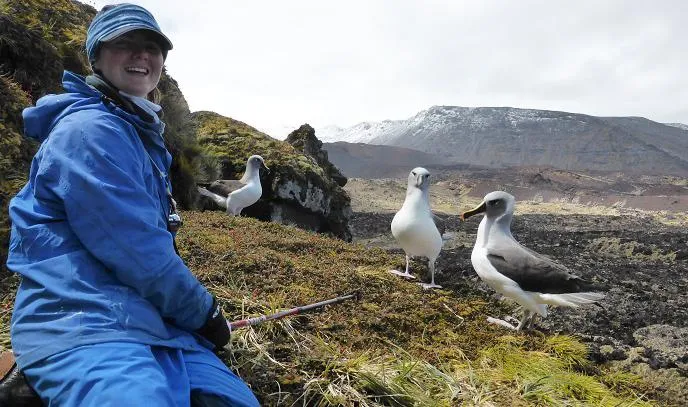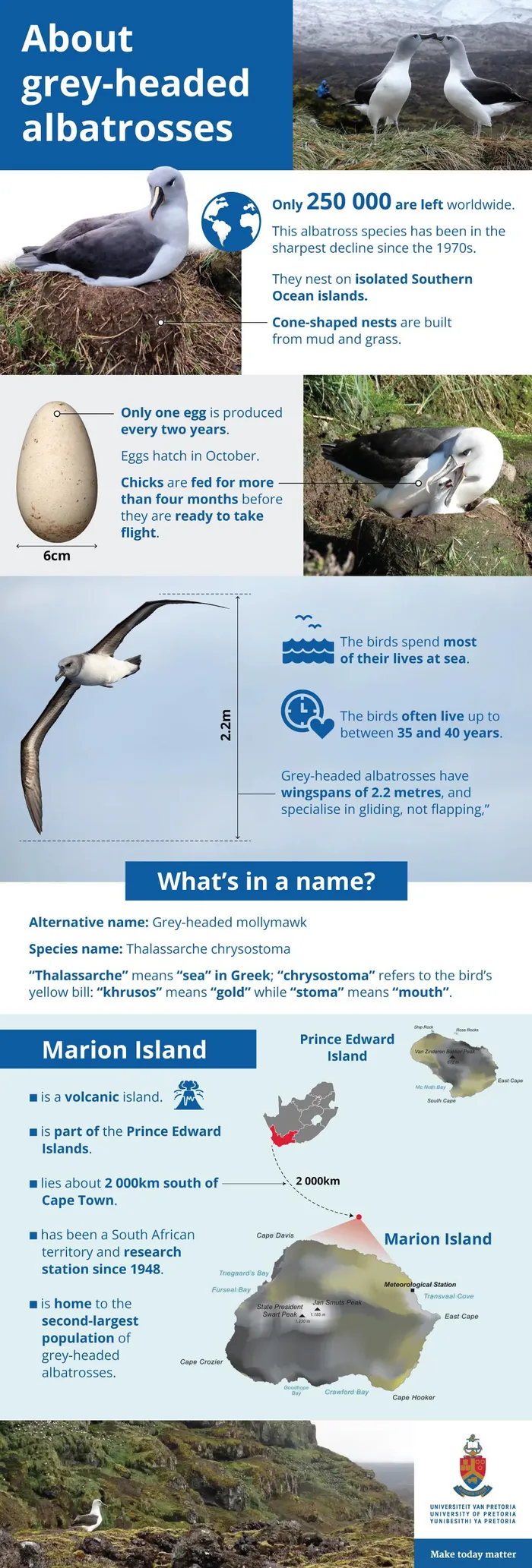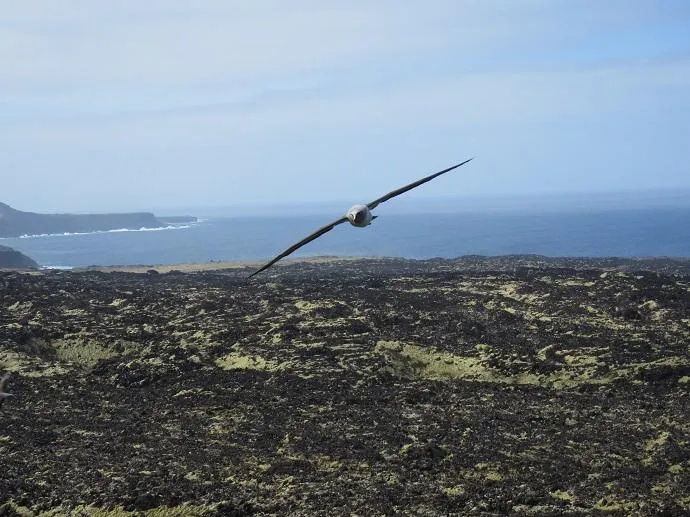New threat to Grey-headed albatross: land-based deaths from strong winds

Dr. Janine Schoombie doing fieldwork on Marion Island
Image: Stefan Schoombie
Researchers from the University of Pretoria (UP) have uncovered a chilling new threat to the endangered Grey-headed albatross—land-based deaths caused by strong winds. This alarming phenomenon was identified during a study on remote Marion Island, which, despite its isolation, is crucial for the long-term survival of these seabirds. Currently, there are only about 250,000 Grey-headed albatrosses left in the world, making the findings of this research all the more significant.
The study, published in the *Marine Ecology Progress Series (MEPS)*, reveals how the extreme weather conditions, particularly wind patterns, are becoming increasingly perilous for wildlife. Marion Island is home to the second-largest breeding colony of Grey-headed albatrosses, and new research indicates that the challenges these majestic birds face are evolving as climate change affects environmental conditions.
Dr Janine Schoombie, an aeronautical engineer with a PhD in Mechanical Engineering from UP, has been at the forefront of this groundbreaking study, which focuses on the birds' unique flight mechanics.
“Grey-headed albatrosses have impressive wingspans of 2.2 metres and are adept at gliding through ocean winds. However, they struggle in highly windy conditions over land, where they are prone to crash landing,” Dr Schoombie said. Their distinctive wing design provides exceptional efficiency in the air, but it comes at a cost—their manoeuvrability is greatly reduced when navigating rocky terrains.

An infographic on the Grey-headed Albatross
Image: Supplied
The research team initially noted the alarming number of carcasses of Grey-headed albatrosses in the inhospitable Santa Rosa Valley on Marion Island in 2017. The presence of broken bones in these birds confirmed that they had endured fatal crashes after attempting to land or take off. Subsequent carcass surveys, conducted from October 2017 to June 2021, revealed that an average of 41 adults and 40 fledglings die each year due to these mishaps. While this may seem a small percentage of the overall population, even slight increases in mortality rates can have a considerable impact on the Grey-headed albatross’s long-term survival.
Dr Schoombie stressed the effect of changing wind conditions on these birds: “Recent studies indicate an increase in strong northerly winds on Marion Island, likely due to shifting weather patterns in the Southern Ocean. If this trend continues, the risk of crash-landing will escalate for breeding albatrosses, particularly when they depart from their nests in adverse conditions.”

A Greyheaded albatross feeting its chick
Image: Supplied
The research team made a significant discovery while mapping the birds' flight patterns; many breeding adults flew dangerously low over a 'crash hotspot' beneath their nesting colony. This particular area, combined with wind variability and downdrafts, leaves the birds vulnerable to sudden loss of lift, resulting in devastating accidents—a risk that is heightened during foraging flights.
"Albatrosses often don't wait for ideal conditions. When parents are relieved from brooding duties, hunger compels them to take off even during unfavourable weather," Dr Schoombie explained.

Grey-headed albatrosses can fly extremely fast and are known for their gliding ability.
Image: Janine Schoombie
To better understand why these crashes occur and how the grey-headed albatross navigates such formidable winds, Dr Schoombie uses UP’s wind tunnel facility for her ongoing research. With insights gained from wind tunnel experiments and the ever-developing techniques for studying these birds, she aims to address the knowledge gap surrounding avian aerodynamics.
Continued research and conservation are paramount to ensure the survival of the grey-headed albatross. As the climate changes and wind patterns adapt, it is vital to monitor how these shifts affect bird populations in the long term. The work conducted by UP’s research team holds implications not only for the future of the Grey-headed albatross but also for the broader ecological balance of sub-Antarctic environments.
Related Topics: